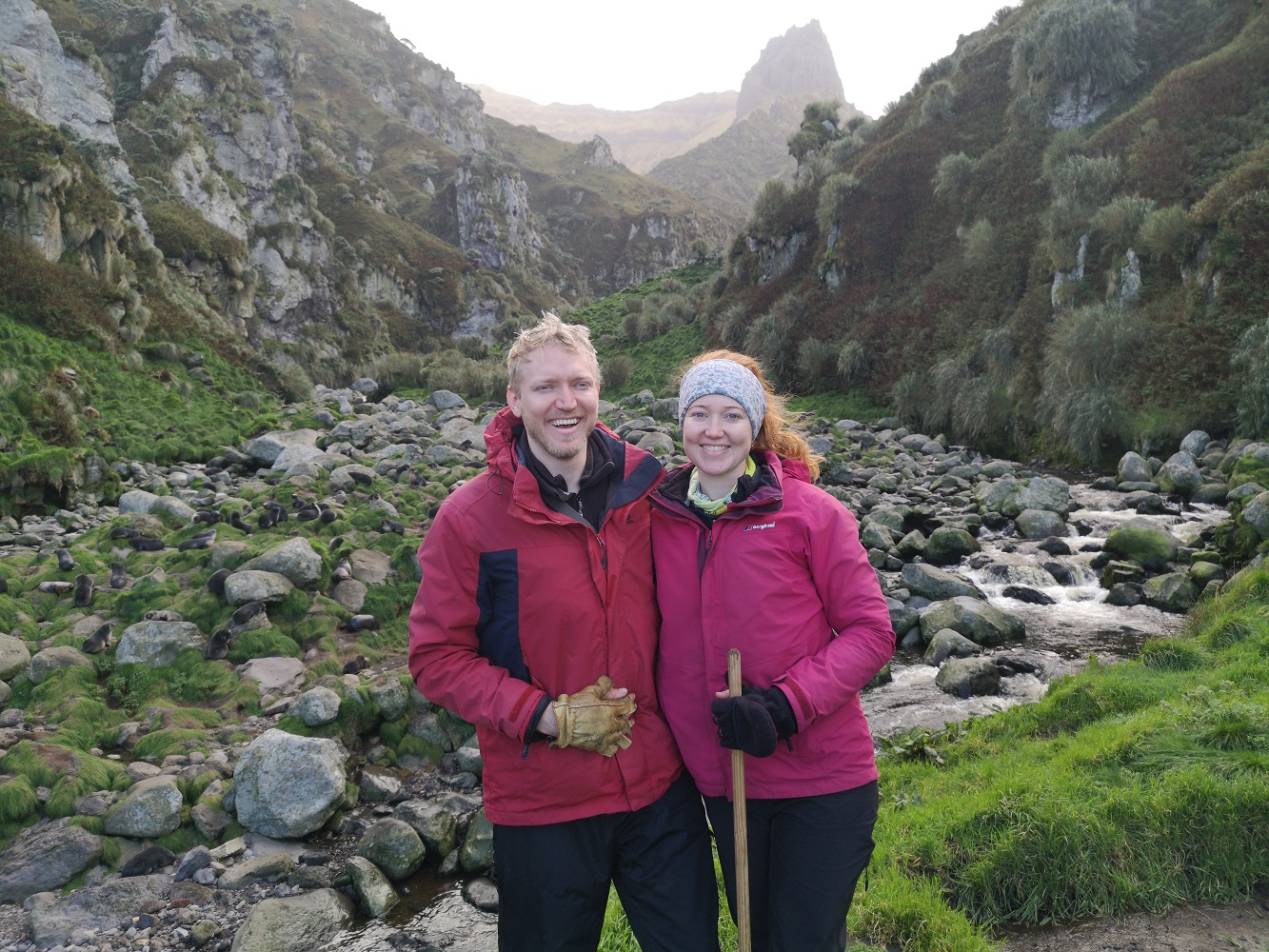
Chris Jones and Michelle Risi at The Glen, Gough Island in 2020, photograph by Dylan Seaton
In the second guest ACAP Monthly Missive, following that by famed helicopter pilot Peter Garden in January, Michelle Risi and Christopher Jones who have spent most of the last decade living and conducting research on seabird islands in the Atlantic, Indian and Southern Oceans, write of their island-loving life, studying both seabirds and land birds, with seals as a sideline, but especially ACAP-listed albatrosses and petrels. In their missive they reflect on both the privileges of living within unspoiled environments, and on the vicissitudes of living in small, close-knit communities that often characterize island life.
Michelle first proposed to me in 2019 that ACAP should sponsor a World Albatross Day (click here). Her enthusiasm overcame my uncertainty and initial reluctance and together with others we promoted the first day on 19 June 2020. For the first three years she designed and produced all the photographic posters for World Albatross Day, still available for free downloading from this website and from albums on the ACAP Facebook Page. Michelle also persuaded a commercial artist friend to design the WAD logo, now available in nine language versions. They have been assiduous in supplying ACAP with photographs of all the ACAP-listed species they have studied for use as illustrations in many posts to ACAP Latest News and for posters and to inspire artworks by ABUN (Artists and Biologists Unite for Nature). Between them they have written species accounts for the ACAP Photo Essays series, and even baked seabird-themed cakes for the two Great Albicake Bakeoffs run by ACAP for World Albatross Days. Not to forget proudly displaying their ’WAD2020’ banner on Gough Island in the South Atlantic!
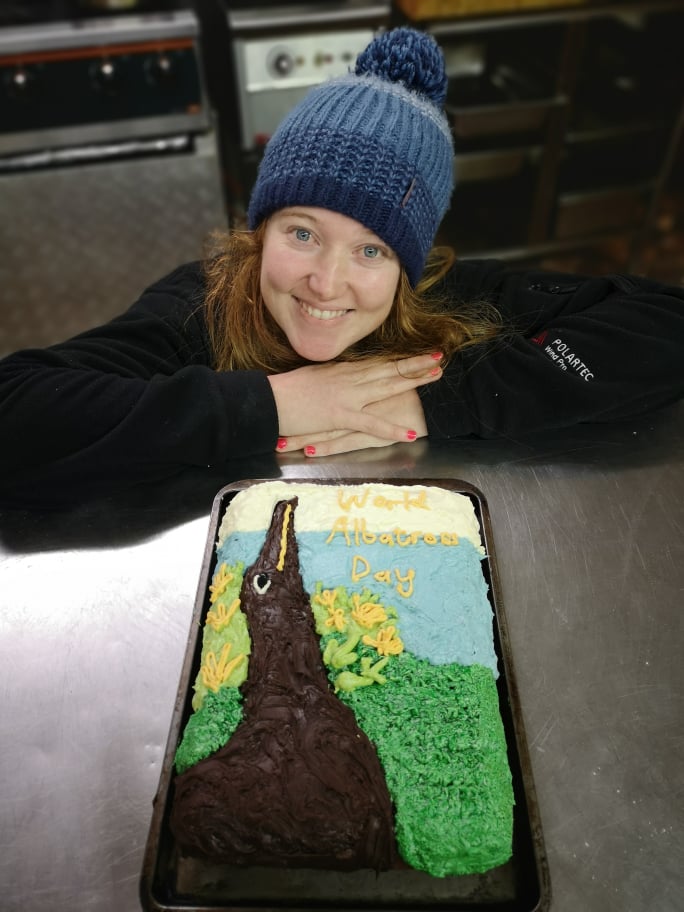
Michelle Risi poses with her Sooty Albatross cake based on her own photograph, baked on Gough Island in 2020
Most of these pro bono activities were undertaken while conducting full days of arduous field work on sub-Antarctic or tropical islands (with Chris earning a Master’s degree on Gough Island’s little-known Critically Endangered MacGillivray’s Prion along the way). They have also built up an impressive list of scientific publications between them, as listed below.
It has been and remains an abiding pleasure to work with Michelle and Chris in the cause of albatross and petrel conservation on Gough and Marion, islands I have been privileged to visit a total of 49 times over four decades. Their account, illustrated with their own photographs, follows.
John Cooper, Emeritus Information Officer, Agreement on the Conservation of Albatrosses and Petrels
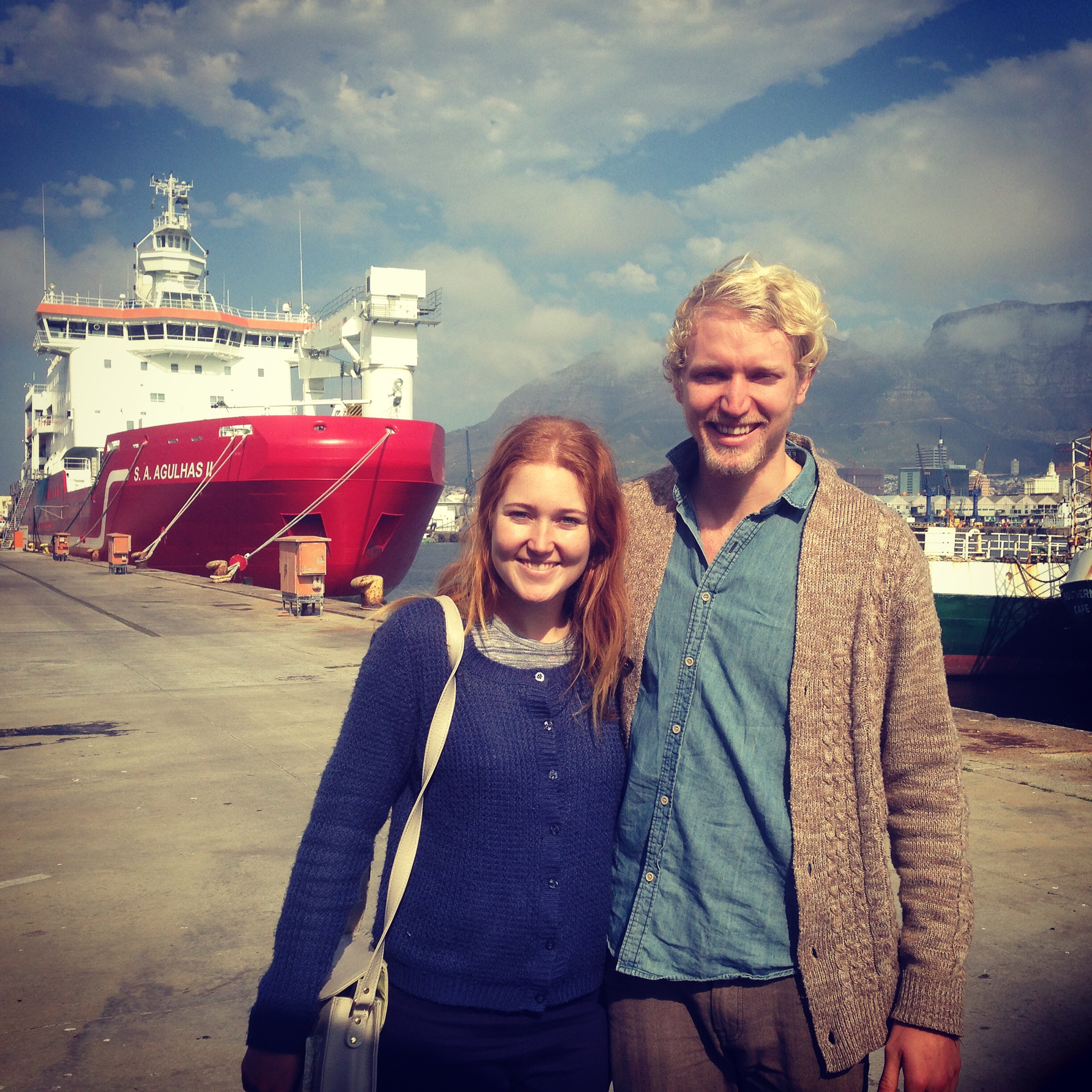
Michelle and Chris in the Cape Town docks in 2014 before their first island expedition. Behind is the SANAP vessel, the S.A. Agulhas II, photograph by Paul Risi
As we write this monthly missive for the Albatross and Petrel Agreement, we are awaiting confirmation of our next expedition, which would then become our second trip to Marion Island in the southern Indian Ocean, and our fifth with the South African National Antarctic Programme (SANAP) in nearly a decade. We have become bona fide island junkies and, since 2014, have spent our time working on islands almost continuously. Mainly on Gough Island, where we first overwintered in 2014, returning in 2018 for what was meant to be a single year to be involved in the attempt by the Gough Island Restoration Programme (GIRP) to eradicate the introduced seabird-killing House Mice in the austral winter of 2019. However, after the eradication was postponed until 2020 for logistic reasons and then again due to the COVID-19 pandemic, we had an extended two-year stay on Gough from September 2018 - October 2020. We then returned as part of the eradication team in 2021 for 6 months. We have also undertaken two long stints in Seychelles in the tropical Indian Ocean, with our most recent 15-month stay being on Aldabra Atoll, a world-famous UNESCO World Heritage Site, famed for holding the world’s largest population of giant tortoises, but also home to many seabirds, our main area of interest.
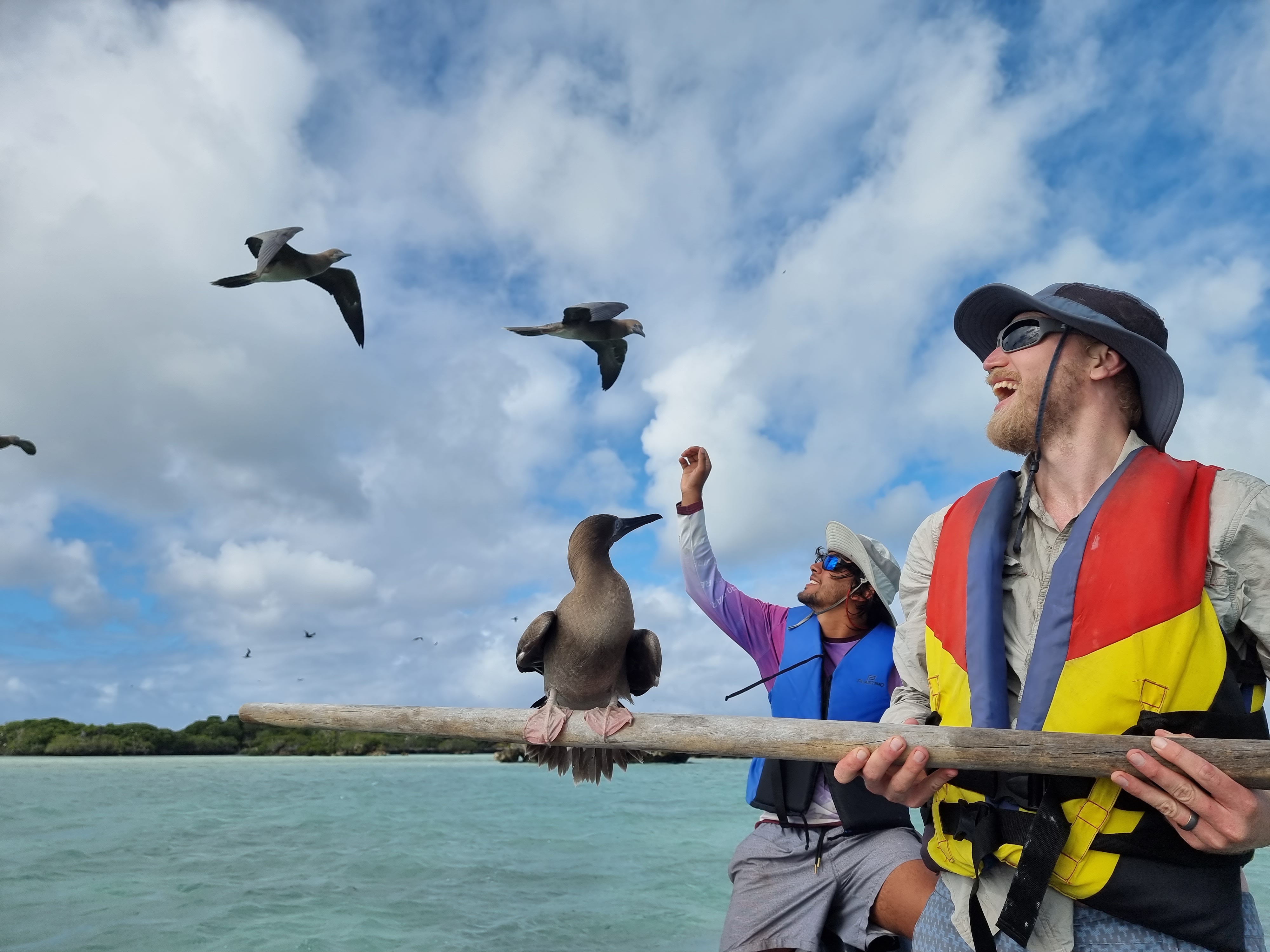
Chris (right) with an inquisitive visitor during the first Red-footed Booby census in 20 years on Aldabra in 2022
We met during our honours year at South Africa’s University of KwaZulu-Natal and both have MSc degrees in biology. Having been told about Gough and Marion Islands as an undergraduate, Chris had always dreamed of being able to visit them. Michelle had also heard of the two islands and went on their first expedition together to try something new, which became a life-changing experience.

Michelle reads the metal band of a displaying Tristan Albatross in the long-term study colony on Tafelkop, Gough Island. All such close approaches are conducted under research permits
Despite being initially most excited to see the penguins when arriving for our first expedition on Gough, the near-endemic and Critically Endangered Tristan Albatrosses stole our hearts, stirred by the alarming rate at which their nests failed due to mouse attacks on chicks. We soon realized we wanted to continue to work on islands with seabirds and on restoration projects to help protect and conserve them; all the while getting to do some interesting science, see incredible sights and have many unforgettable memories where you keep saying to yourself, “how is this my job, it’s so cool”.

With a backpack full of nest marker poles, Michelle adds a plastic alphanumeric band to a breeding Northern Giant Petrel in the Trypot long-term study colony on Marion Island in 2017
People are often shocked when we tell them what we do and say, “wow, being stuck with so few people and no shops must be challenging”. But really, not having a shop was the least of our concerns. Shops feel completely overwhelming to us now, and we tend to avoid them as much as possible whenever we are back in South Africa. For us the people part is the most challenging aspect of our work. The thought of living on a remote island seems idyllic to many. Still, many trials can come when a small group of people live together in an isolated place with limited resources and often different backgrounds. Regular “mother’s meetings” are necessary in the cramped bases where we have lived to air problems and seek solutions, helped by practicing tolerance and forbearance of other’s points of view. These can be tough places if you don’t have a passion for wildlife, and we are very thankful we have each other to keep ourselves sane.
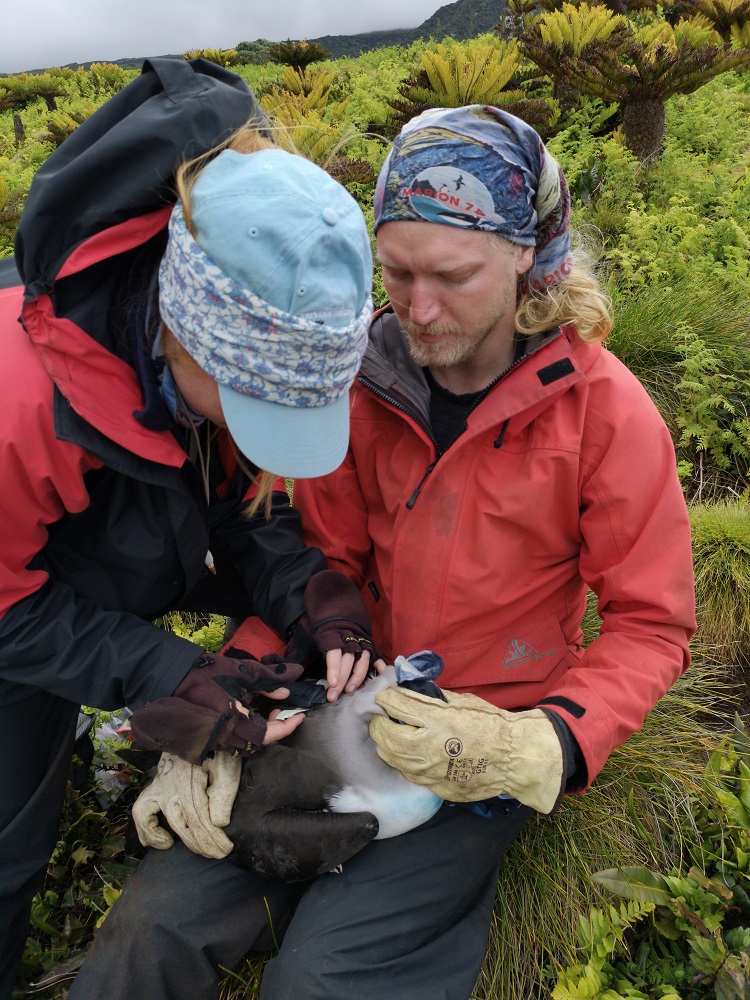
Michelle and Chris carefully deploy a GPS tracker on a brooding Atlantic Yellow-nosed Albatross on Gough Island in 2018; the gloved hand helps calm the bird by covering its eyes. Photograph by Alexis Osborne
Despite the people challenges, spending time on islands like Gough and Marion is a huge privilege. The two islands are similar but are also different in several ways. Gough, despite being much smaller, is the more challenging island on which to conduct field work. It is much steeper than Marion, and large portions of it are inaccessible by foot. Also, the vegetation on Gough is much harder to navigate, with need to fight through thickets and avoid stepping into petrel burrows at lower elevations. Michelle even commented on her first ‘round island’ multi-day coastal hike on Marion how much easier the walking was than during her previous year on Gough, much to the chagrin of the island’s seal biologists who like to talk up how tough Marion’s terrain is. Aside from the difficulty with moving around, the islands have quite a different feel. On Marion, most life is focused along the coast. It’s not unusual to see Wandering Albatrosses not too far from Sooty and Light-mantled Albatrosses, amongst breeding Northern and Southern Giant Petrels, next to all four penguin species, and with Southern Elephant Seals and Subantarctic and Antarctic Fur Seals nearby. It can be somewhat overwhelming! Whereas on Gough, there is a more discrete zonation of species, with Tristan Albatrosses only breeding between 400-800 m asl, Southern Giant Petrels forming colonies in isolated areas of the uplands, Atlantic Yellow-nosed Albatrosses confined to below 400 m in fern bush habitat and Northern Rockhopper Penguins on beaches at the bottom of steep coastal cliffs. In addition, Gough tends to be much louder at night with a richer cacophony of burrowing petrel calls that does Marion, whose burrowing petrel communities have been greatly reduced by feral cats, and have not yet recovered after the cats were extirpated towards the end of the last century.

No need to restrain. Chris whistles at an inquisitive juvenile Gough Bunting in 2020
Overall, the most rewarding part about spending time on remote islands is the inimitable perspective you can have on what life is like without humans. Not an easy thing to achieve in the Anthropocene. Although these islands are still affected by global human pressures, such as climate change, fishing practices and marine pollution, they are among the very few places where you can still see into the past, surrounded by wonderful, unafraid animals going about their daily lives as they barely take any notice of your presence. It gives an incomparable sense of pleasure to be able to see things that feel like they should be unseen by human eyes, and be to have walked where perhaps no human foot has touched the ground before your own.
Gough and Marion Island publications by Christopher Jones and Michelle Risi
Bond, A.L., Risi, M.M., Jones, C.W. & Ryan, P.G. 2016. Potential for primary poisoning of a critically endangered endemic land bird during rodent eradication operations at Gough Island, Tristan da Cunha. PeerJ PrePrints 4:e1744v2.
Clark, B.L., Carneiro, A.P.B., Pearmain, E.J., Marie-Morgane Rouyer, M.M. et al.. .Jones, C.W, Dias, M,P. In press. Global assessment of marine plastic exposure risk for oceanic birds. Nature Communications.
Jones, C.W.P. 2018. Comparative ecology of Pachyptila species breeding sympatrically at Gough Island. MSc, Department of Zoology, University of Cape Town. 81 pp.
Jones, C.W., Phillips, R.A., Grecian, W.J. & Ryan, P.G. 2020. Ecological segregation of two superabundant, morphologically similar, sister seabird taxa breeding in sympatry. Marine Biology 167 doi.org/10.1007/s00227-020-3645-7.
Jones, C.W., Risi, M.M. & Bester, M.N. 2020. Local extinction imminent for southern elephant seals Mirounga leonina at their northernmost breeding site, Gough Island - South Atlantic Ocean. Polar Biology 43: 893-897.
Jones, C.W., Risi, M.M., Cleeland, J. & Ryan, P.G. 2019. First evidence of mouse attacks on adult albatrosses and petrels breeding on sub-Antarctic Marion and Gough Islands. Polar Biology 42: 619-623.
Jones, C.W., Risi, M.M. & Cooper, J. 2019. An incubating northern giant petrel actively feeds on a Salvin's prion. Antarctic Science 31: 317-318.
Jones, C.W., Risi, M.M., Osborne, A. & Bester, M.N. 2019. First record of a leucistic sub-Antarctic fur seal. Polar Biology 42: 1217-1220.
Jones, C.W., Risi, M.M., Osborne, A.M., Ryan, P.G. & Oppel, S. 2021. Mouse eradication is required to prevent local extinction of an endangered seabird on an oceanic island. Animal Conservation 24: 637-645.
Jones, C.W., Risi, M.M., Osborne, A.M., Parker, G.C., Rexer-Huber, K., Le Bouard, F., Cleeland, J.B., Lawrence, K., Kinchin-Smith, D., Witcutt, E., Starnes, T., Bond, A.L., Ryan, P.G. & Oppel, S. 2020. Abundance, distribution and breeding success of the endemic Gough Island Finch Rowettia goughensis between 2009 and 2018. Emu - Austral Ornithology 120: 230-238.
Jones, C.W., Risi, M.M., Kuntz, W., Ryan, P.G., Steinfurth, A., & Bond, A.L. 2015. Bill deformities in penguins (Spheniscidae): a global review. Marine Ornithology 43: 207-209.
Jones, M.G.W., Techow, N.M.S., Risi, M.M., Jones, C.W., Hagens, Q.A., Taylor, F. & Ryan, P.G. 2019. Hybridization and cuckoldry between black-browed and grey-headed albatrosses. Antarctic Science 32-10-14.
Oppel, S., Clark, B.L., Risi, M.M., Horswill, C., Converse, S.J., Jones, C.W. Osborne, A.M., Stevens, K., Perold, V., Bond, A.L., Wanless, R.M., Cuthbert, R., Cooper, J. & Ryan, P.G. 2022. Cryptic population decrease due to invasive species predation in a long-lived seabird supports need for eradication. Journal of Applied Ecology doi.org/10.1111/1365-2664.14218.
Osborne, A., Jones, C.W., Risi, M.M., Green, D.B., Dilley, B.J: & Cooper, J. 2020. Cases of foreign egg adoption by Brown Skuas Stercorarius antarcticus on Marion and Gough Islands. Polar Biology 43: 887-891.
Risi, M.M., Jones, C.W., Osborne, A.M., Steinfurth, A. & Oppel, S. 2021. Southern Giant Petrels Macronectes giganteus depredating breeding Atlantic Yellow-nosed Albatrosses Thalassarche chlororhynchos on Gough Island. Polar Biology 44: 593-599.
Risi, M.M., Jones, C.W., Schoombie, S. & Ryan, P.G. 2019. Plumage and bill abnormalities in albatross chicks on Marion Island. Polar Biology 42: 1615-1620.
Ryan, P.G., Dilley, B.J., Risi, M.M., Jones, C.W., Osborne, A., Schofield, A., Repetto, J. & Ratcliffe, N. 2019. Three new seabird species recorded at Tristan da Cunha archipelago. Seabird 32: 122-125.
Schoombie, S., Schoombie, J., Brink, C.W., Stevens, K.L., Jones, C.W., Risi, M.M. & Ryan, P.G. 2019. Automated extraction of bank angles from bird-borne video footage using open-source software. Journal of Field Ornithology 90: 361-372.
Schoombie, J., Schoombie, S., Connan, M., Jones, C.W., Risi, M., Craig, K.J., Smith, L., Ryan, P.G. & Shepard, E.L.C. In press. Impact of wind on crash-landing mortality in grey‐headed albatrosses Thalassarche chrysostoma breeding on Marion Island. Marine Ecology Progress Series doi.org/10.3354/meps14292.
Michelle Risi and Christopher Jones, Cape Town, South Africa, 04 April 2023


 English
English  Français
Français  Español
Español 
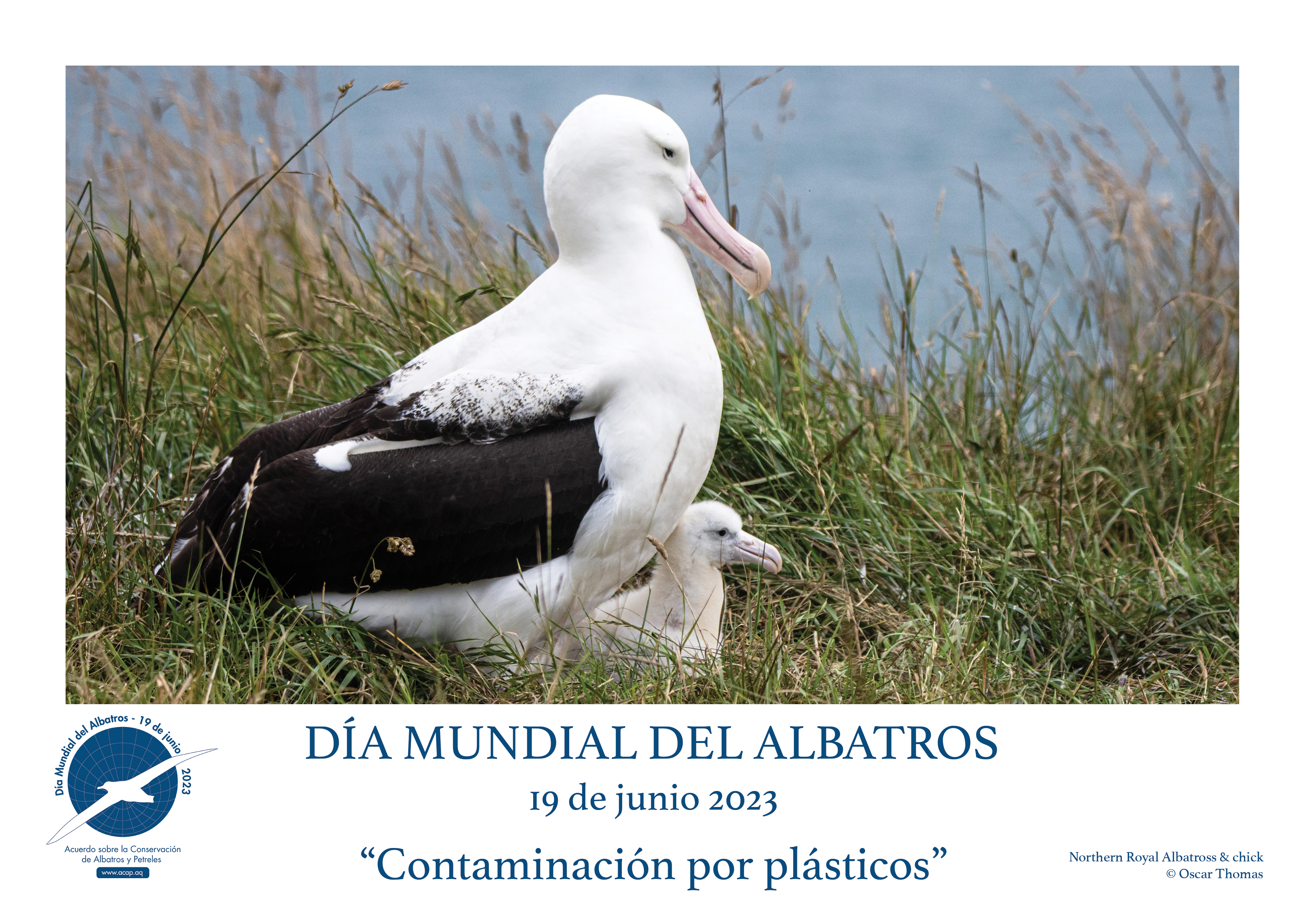
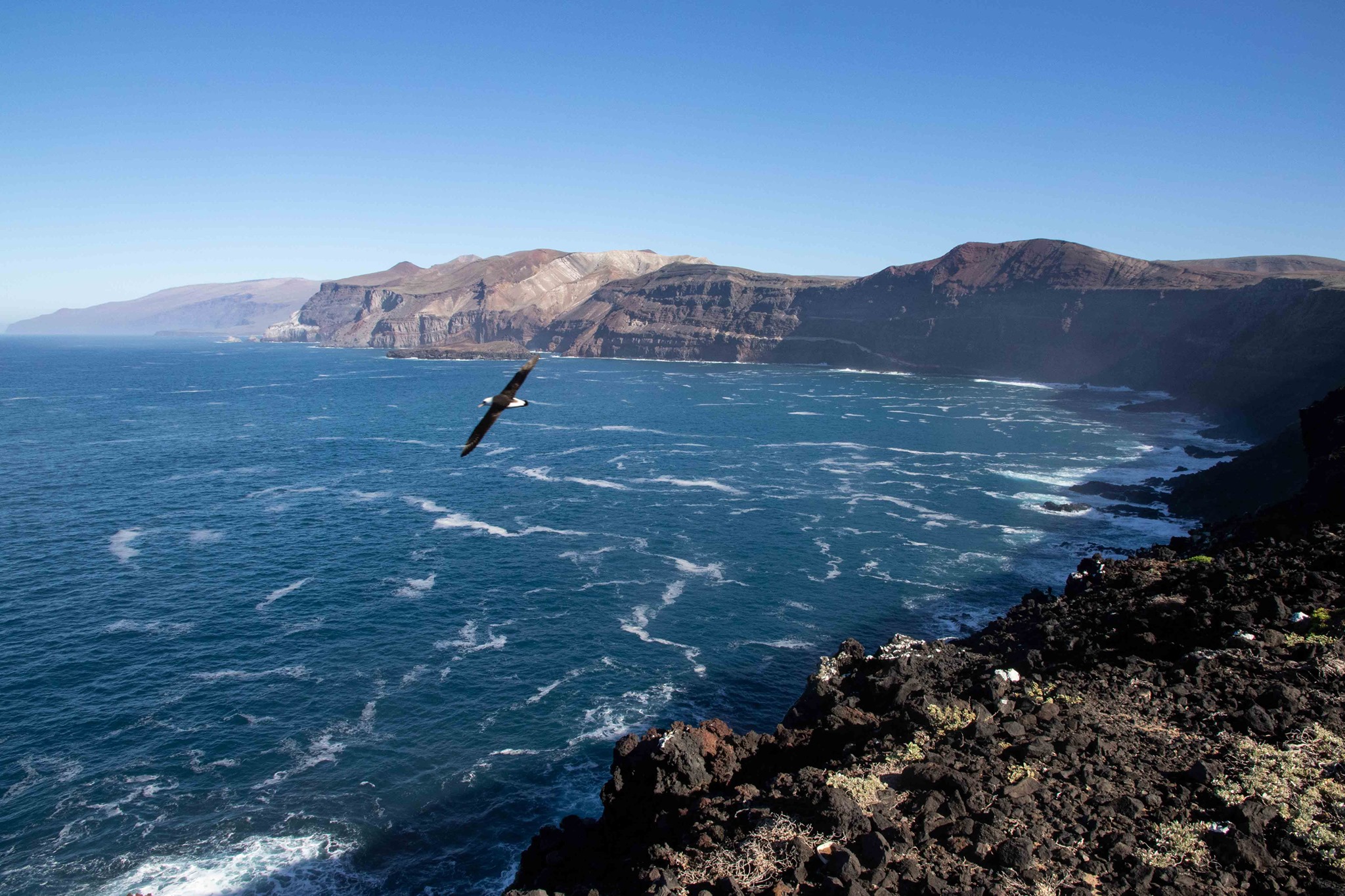 ACAP produces maps for ACAP Species Assessments using data from BirdLife International's Seabird Tracking Database, including that for the Laysan Albatross (pictured); photo by Eric VanderWerf
ACAP produces maps for ACAP Species Assessments using data from BirdLife International's Seabird Tracking Database, including that for the Laysan Albatross (pictured); photo by Eric VanderWerf







 The study reviewed data from 23 seabird species including the Westland Petrel (pictured); photograph by Kerry-Jayne Wilson
The study reviewed data from 23 seabird species including the Westland Petrel (pictured); photograph by Kerry-Jayne Wilson